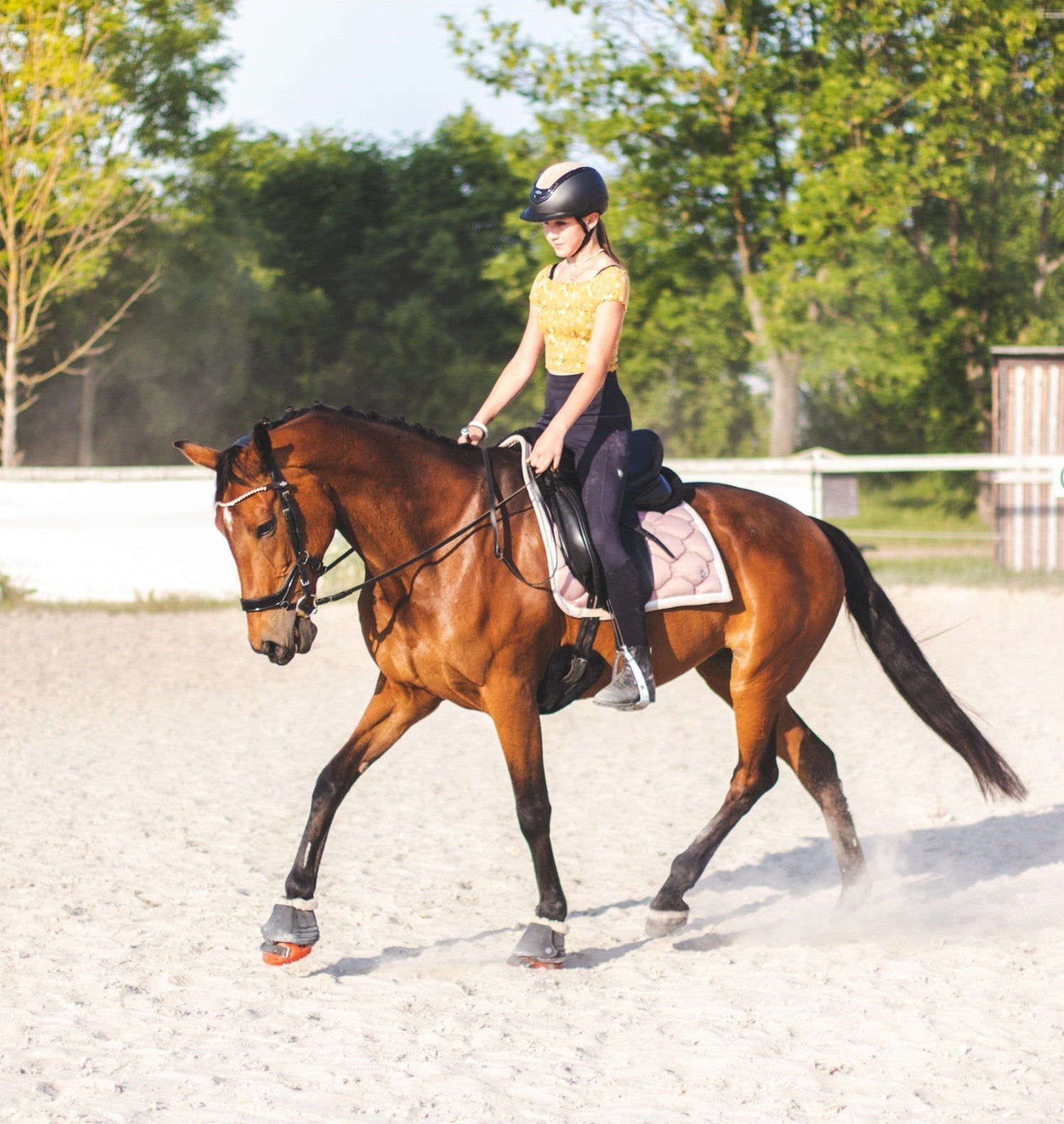For best longevity and durability of the hook and loop material, keep straps clean, free of debris, and in good condition, and wash frequently after use. Each strap includes rubber keeper loops.
Strap Tension
The tension strap is the lower one that goes across the horses hoof. Make sure that the velcro is centered on the hoof while fastening, as this helps keep the hoof boot balanced and secure. It is not necessary to use any force or tighten the tension strap too much, you just need a nice snug fit. Imagine tightening the laces on your own shoes - the strap should sit "snug" but not "tight".
Each horse owner will need to experiment with tension settings to discover what degree of tension works best for the way your horse moves, the speed you ride and the environmental conditions you ride in. In all cases you should always start with 'looser' settings, and work your way up from there if needed. If you are having boot retention problems, making straps “super tight” is NOT the solution, it will cause issues.
The pastern strap is the top strap that goes across the horse's leg. It must be loose enough to allow the heel captivator to find its equilibrium with the bulbous shape of the heel bulbs, and flex with the horse's hoof movement. This is why we created our patented pivoting heel design. You should see a gap under the pastern strap and be able to slip FOUR fingers under the strap (or three if you have large hands).

The pastern strap is NOT the main thing that keeps the hoof boots on, this is the job of the heel captivator. The pastern strap is a “check strap” to prevent the heel captivator from pulling downward off the heel bulbs (for example in the event of an overreach from a hind hoof or interference with opposing hooves or when riding through heavy brush etc.) An overly tight pastern strap may even force the heel captivator up against the backside of the pasterns which could lead to rubbing.
Keep in mind that the pasterns descend during weight loading, and they also move forward just before the hoof leaves the ground. If the pastern strap is too tight, then this forward movement of the pastern acts upon the heel captivator pulling it forward and upward in an undesirable cyclic manner. Some horses with long pasterns or a lot of “drop” to their pastern movement may need even more clearance than shown - if in doubt, speak with our team via the web chat now.
Tension Strap Sizes & Hoof Boot Size
Also known as the "Toe Strap," the Tension Strap is the primary means of retention and tightening. Connects the cables, via cable adapters, at the toe of the boot.
| Tension Strap Size | Hoof Boot Size | Strap Length (Unfolded) |
| Small | Classic 00, 0, 1 | 12" |
| Viper 120x110, 125x115, 125x120, 125x125, 130x120, 130x130, 135x125 | 12" | |
| Medium | Classic 2, 2W, 2WW | 13" |
| Viper 135x130, 135x135, 140x130, 140x135, 140x140, 145x145, 150x150 | 13" | |
| Large | Classic 4WW | 15" |
Pastern Strap Sizes & Hoof Boot Size
The Pastern Strap is the secondary means of retention, and connects the pivoting Heel Captivator around the pastern of the horse. Apply with a minimum of 4 fingers width gap between the horse's pastern and the strap. Neoprene cushion is included and incorporated as part of the strap.
| Pastern Strap Size | Hoof Boot Size | Strap Length (unfolded) |
| Small | Classic 00 (or boots with Classic narrow captivators) | 17" |
| Medium | Classic 0, 1, 2 | 18" |
| Viper 125x120, 125x125, 130x120, 130x130, 135x125, 135x130 | 18" | |
| Large | Classic 2w, 2WW | 20.5" |
| Viper 135x135, 140x130, 140x135, 140x140, 145x145, 150x150 | 20.5" | |
| X-Large | Classic 4WW | 22" |





